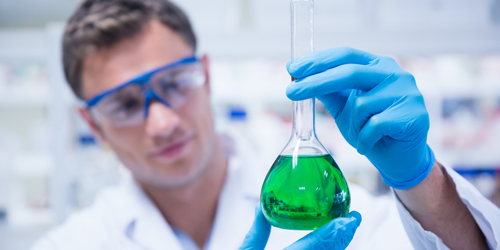July 2019
This is a question that is becoming more common, as companies look to do the right thing by their environmental and sustainability values, however the answer is not a simple one.
Unfortunately, the terms “natural”, “green”, “organic” and “safe” are often bundled together in people’s minds forming an all-encompassing standard that in reality very rarely exists, in that it doesn’t tick all of those boxes without having some downside to it.
One example of this would be the chemical Peracetic Acid – this has been used for many years as a reliable surface sanitiser and direct food contact antimicrobial in food and beverage processing companies. Chemically speaking the product is basically oxygenated vinegar with small amounts of food grade stabilisers added to it, and it breaks down into harmless natural compounds once it has done its job.
It would be hard to think of anything more natural, green and organic than oxygen and vinegar, so one might be led to assume it was also very safe. However, take a glance at the label of a peracetic acid product and you will see a plethora of scary symbols and warning statements telling you that it is a highly toxic, corrosive and dangerous chemical to store, transport and use, and therein lies the reality check.
Two points we can’t change
In the highly competitive and high-risk world of manufacturing food and beverages, when it comes to chemicals designed to clean and sanitise food-contact equipment, there are two things that can’t be compromised –
- It must work – effectively clean and be lethal to micro-organisms
- It must be cost-effective (therefore products are normally as concentrated as practical)
We can make products that are diluted to a point that they are no longer hazardous or unsafe for the operator, but that means we will be shipping an awful lot of water around the country, and that wouldn’t look good from an environmental or sustainability viewpoint, would it?
So, are we saying it must be one or the other? It can’t be sustainable, organic, safe to use, cost effective and really work? The answer is not an easy one as it is highly dependent on your specific situation and which of these features are the most important to you and your organisation. Our team would love to help you work out what is the best solution for you – simply fill in the form below and we’ll be in touch.
By the way
Here’s a quick peep at something we’re developing. There is a bright light on the horizon in the form of some new technologies that are on the cutting edge of chemistry and bio-chemistry and these hold real promise to be able to tick all these boxes – sustainable, organic, safe to use, cost effective and they really work. We are actively working to bring these to the NZ market and working through the regulatory framework and field trials – keep an eye out on this channel for further news.
Posted by Glen Senior

